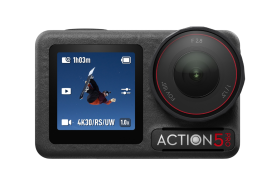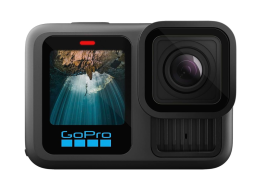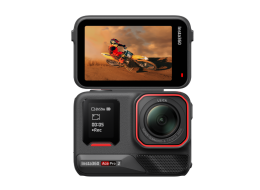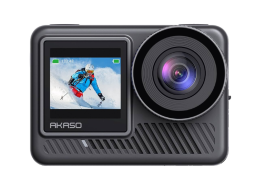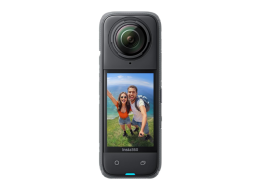Understanding Action Camera Specs: Build Quality, Battery, and Mounting

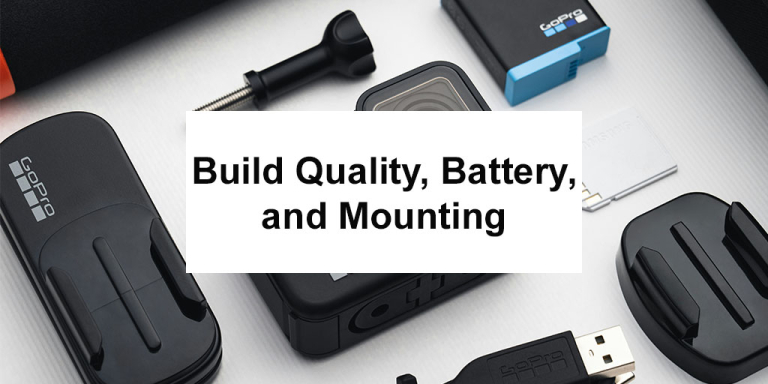
So far we’ve focused on image and sound specs, but action cams live in the real world of dust, water, bumps, and long recording sessions. This last section covers the often less-advertised, but critical, aspects of durability, battery life, and mounting options. These can make the difference between capturing the shot or not, and how the camera fits into your activities.
Durability & Weatherproofing
By definition, action cams are meant to be used in rugged environments. Key specs to look at: waterproof rating, dustproof rating, shock resistance, and operating temperature. Most leading action cams are waterproof without an external case to a certain depth. For example, GoPro Hero and DJI Action are typically rated waterproof down to 10 meters (33 feet) out of the box.
The DJI Osmo Action 4 even goes further – rated to 18 m without a case. These are usually IP68-rated (the ‘6’ means fully dust-tight, the ‘8’ means water resistant beyond 1m depth). What this means: you can take them snorkeling, surfing, or in a heavy rain without worry. If you’re diving deeper (say 30m+), you’d need an external dive housing which often extends protection to 40–60m.
If a camera isn’t natively waterproof, that’s a red flag for an action cam – it should at least handle rain or a quick dunk with minimal fuss. Always ensure all doors (battery, USB ports) are securely closed and sealed before getting it wet. Also, watch for details: “waterproof” doesn’t mean invincible – cameras aren’t fans of hot water (hot springs) or prolonged saltwater exposure without rinsing (salt can corrode seals).
Shock and Freeze
Many manufacturers don’t explicitly state drop-proof ratings (some might say “shockproof to 5 ft/1.5m” if they have tested it). Generally, these cams in their frame or housing can survive tumbles. They have lens protectors you can replace if scratched. Check if the lens cover is replaceable – GoPros have removable protective lens covers, which is very handy if you scratch it (just buy a new cover instead of replacing the whole lens). As for temperatures, look at operating range. GoPros with the Enduro battery are optimized for cold (they’ll work in freezing temps where older batteries died quickly). DJI Action batteries spec operation from -20°C to 45°C, which covers most winter to desert scenarios. Extreme cold will still reduce battery life though.
Action Camera Battery Life
Speaking of batteries – this is a pain point sometimes. The high performance specs (4K, stabilization, high fps) chew through battery power. Manufacturers might claim “Up to 2 hours” but that’s usually under very ideal conditions (1080p, 30fps, no stabilization, etc.). In real heavy use (say 4K 60fps with stabilization), you might get 50 minutes to an hour on a full charge. Check the battery capacity (measured in mAh) and any runtime tests.
For instance, the Osmo Action 4 has a 1770 mAh battery, and DJI claims 160 minutes of continuous recording (that was at 1080p/24fps, no WiFi, presumably)dl.djicdn.com. In practice at 4K/60 with EIS, it will be less. GoPro’s Enduro battery is 1720 mAh and yields maybe 50-70 minutes at 5.3K/60 in tests (or around 90 minutes at 4K/30).
The good news is action camera batteries are swappable on almost all models (except some mini ones). Always get a couple of spares if you’re going on a day trip. Also, consider external power: some people use power banks to run the camera for long timelapses or use a camera grip like the GoPro Volta (battery handle).
One more thing: using features like WiFi, Bluetooth (for remote control or preview) can drain action camera battery faster. As does extreme cold – your battery that lasts 1 hour at 25°C might last only 20 minutes at -10°C unless it’s a special cold-weather battery. Plan accordingly for ski trips (keep batteries warm in an inner pocket).
Mounting Ecosystem
One of the biggest advantages of using an action cam (versus a phone or bigger camera) is the variety of mounts and accessories available. A camera is only as good as the angles you can capture with it! The de-facto standard is the GoPro three-prong mount system. By now, most action cams either use the same system or provide adaptors. GoPro itself has folding “fingers” built into the camera’s base since Hero8, which directly attach to any GoPro-style mount.
DJI Osmo Action adopted a similar finger mount design as well (ensuring cross-compatibility). The spec you might see is something like “compatible with GoPro mounting ecosystem” even if not explicitly stated – user reviews or accessory makers will tell you. For example, GoPro MAX’s page notes it’s “compatible with industry-standard mounts and tripods”gopro.com – meaning the fingers can connect to typical 3-prong accessories or 1/4″ tripod screw via an adapter.
Typical mounts include: flat and curved adhesive mounts (for helmets, boards), handlebar mounts, chest harness, head strap, suction cup (for cars or windows), wrist strap, clamp mounts, extension poles/selfie sticks, and so on. A good action cam brand will have a range of official mounts, and there’s a huge third-party market as well.
Look for a camera that either has that 2-prong/finger system or at least a standard 1/4″-20 tripod thread (some have both via a frame). Insta360, for example, often provides a little adapter that converts their mount to GoPro mount. In short, mounting compatibility is key – you don’t want to be stuck with only one way to use the camera.
Also, note the availability of specialized mounts like magnetic mounts (some cameras have a magnet system to quickly snap onto a mount, e.g., Insta360 GO or DJI Action’s magnetic adapter), or dive housings, or lens filters (ND, CPL filters that clip on the lens for creative control). These might not be “specs” but are part of the ecosystem.
Storage and Memory
Action cams use microSD cards. It’s worth noting what capacity and speed they support (e.g., “up to 256 GB microSD, U3 recommended”). Using a too-slow card can cause recording to stop, especially at high bitrates. So always pair your cam with a suitable high-speed card (UHS-3 or V30 or higher for 4K). This isn’t always in bold print on spec sheets, but is in the fine details.
Finally, maintenance: Rinse your camera after saltwater use, dry it before opening battery door (to avoid drips inside). Check the gasket seals for debris. These little things ensure the cam stays waterproof. Replace lens protectors if they get scratched (they often screw off). These aren’t specs but good practice to extend the life of your gear.
Action Camera Maintenance
Rinse your camera after saltwater use, dry it before opening battery door (to avoid drips inside). Check the gasket seals for debris. These little things ensure the cam stays waterproof. Replace lens protectors if they get scratched (they often screw off). These aren’t specs but good practice to extend the life of your gear.
Typical vs. High-End Example
Frankly, most name-brand action cams today have excellent build quality: waterproof, robust, and lots of mounts. A “typical” cheaper cam might advertise 30m waterproof – but only with an external plastic case (without the case it might not be waterproof at all). The high-end GoPro/DJI can do 10m naked. Cheaper cams might also have shorter battery life due to smaller batteries and less efficient chips – maybe 60 minutes at 1080p – whereas high-end optimize every drop (and you can get Enduro or extended batteries). High-end also have more refined mounting – like GoPro’s folding fingers or DJI’s magnetic quick-release mounts – making it faster to swap mounts.
To illustrate, the DJI Osmo Action 4 has an impressive spec sheet for durability: IP68, 18m waterproof, -20°C operation, and even a quick-release mounting system with both magnet and 3-prong compatibility. It’s built for hardcore use out of the box. A basic cam might need a plastic case to handle rain and uses a simple tripod screw – workable, but not as slick.
Conclusion
Build quality ensures the camera survives the adventure. Check that your camera can handle the environments you’ll throw at it – underwater hikes, dusty dunes, freezing ski slopes, or the occasional crash. Action camera battery life might limit how long you can record, so pack spares or a power bank for extended sessions. And make sure you have the right mounts to put the camera in the middle of the action – whether it’s on your helmet, board, bike, or dog (yes, pet harnesses exist!). A camera is only as good as where you can position it.
Missed part seven? Then go back and learn about audio quality in action cameras.
Featured image by Sanju Pandita.
The Best Sturdy Action Cameras
FAQ
How durable are action cameras?
Most top-tier action cams are built for tough environments—dust, water, shocks, and extreme temperatures. Look for IP68-rated models, which are fully dustproof and waterproof beyond 1 meter. GoPro and DJI models, for example, are waterproof to 10–18 meters without a case.
Do I need an external case for water activities?
For snorkeling or surfing, most modern cams don’t need a case. For deep dives (30m+), you’ll need a dedicated dive housing that extends waterproofing up to 40–60 meters.
Can action cams survive drops and cold weather?
Many can handle small drops, especially in a frame. Look for removable lens covers for easy scratch repairs. For cold, check the battery type—GoPro’s Enduro and DJI’s batteries are designed to work in freezing temperatures (as low as -20°C), but battery life still drops significantly in extreme cold.
What’s the real battery life like?
Manufacturers often overstate battery life. In practice, recording at 4K/60fps with stabilization gives around 50–70 minutes per battery. Always carry spares or use power banks for long sessions.
Can I use different mounts and accessories?
Yes! Most action cams use or support the GoPro-style 3-prong mount system, offering wide compatibility. Some also include a standard 1/4″ tripod thread. Look for magnetic mounts, quick-release systems, or bundled adapters for extra flexibility.
What about mounting options for different activities?
Mounts are available for helmets, bikes, chests, cars, wrists, and more. A good ecosystem includes both official and third-party accessories. Compatibility with GoPro mounts ensures broad access to mounting gear.
What type of memory cards should I use?
Use high-speed microSD cards—UHS-3 (U3) or V30 rated—for 4K or high frame rate recording. Slow cards can cause recording errors or dropped footage.
How should I maintain my camera?
Rinse with fresh water after saltwater use, dry before opening any doors, and check seals for debris. Replace scratched lens protectors when needed to maintain image clarity and waterproofing.
